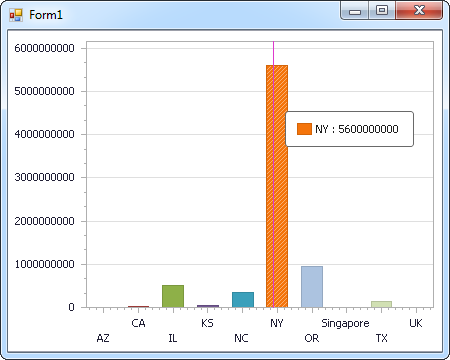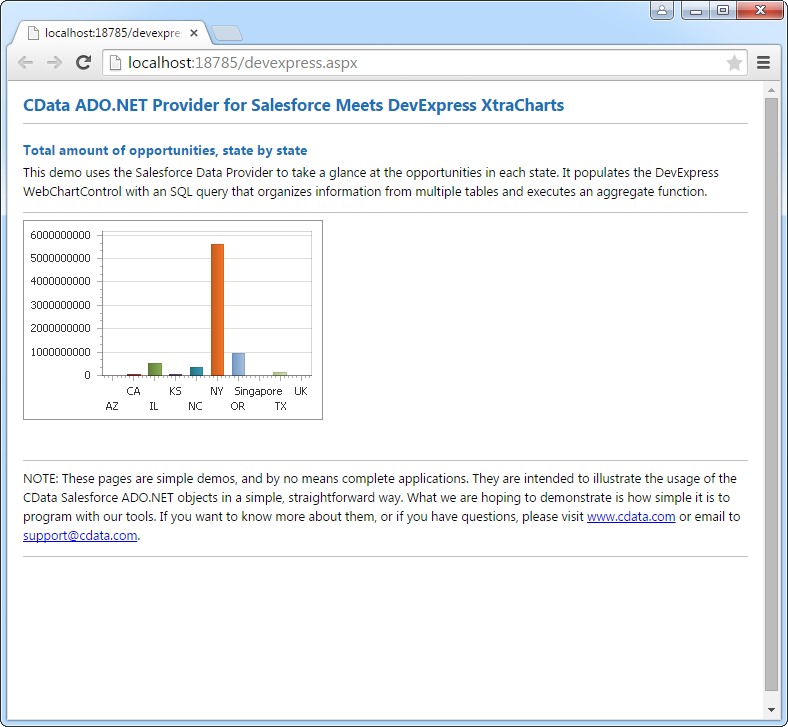Model Context Protocol (MCP) finally gives AI models a way to access the business data needed to make them really useful at work. CData MCP Servers have the depth and performance to make sure AI has access to all of the answers.
Try them now for free →DataBind Marketo Data to the DevExpress Data Grid
Use the CData ADO.NET Provider for Marketo with the DevExpress Windows Forms and Web controls to provide Marketo data to a chart.
The ADO.NET Provider for Marketo by CData incorporates conventional ADO.NET data access components compatible with third-party controls. You can adhere to the standard ADO.NET data binding procedures to establish two-way access to real-time data through UI controls. This article will demonstrate the utilization of CData components for data binding with DevExpress UI Controls (Windows Forms and Web controls), specifically binding to a chart that visualizes live data.
Both the REST and SOAP APIs are supported and can be chosen by using the Schema property.
For the REST API: The OAuthClientId, OAuthClientSecret, and RESTEndpoint properties, under the OAuth and REST Connection sections, must be set to valid Marketo user credentials.
For the SOAP API: The UserId, EncryptionKey, and SOAPEndpoint properties, under the SOAP Connection section, must be set to valid Marketo user credentials.
See the "Getting Started" chapter of the help documentation for a guide to obtaining these values.
Windows Forms Controls
The code below shows how to populate a DevExpress chart with Marketo data. The MarketoDataAdapter binds to the Series property of the chart control. The Diagram property of the control defines the x- and y-axes as the column names.
using (MarketoConnection connection = new MarketoConnection(
"Schema=REST;RESTEndpoint=https://311-IFS-929.mktorest.com/rest;OAuthClientId=MyOAuthClientId;OAuthClientSecret=MyOAuthClientSecret;")) {
MarketoDataAdapter dataAdapter = new MarketoDataAdapter(
"SELECT Email, AnnualRevenue FROM Leads", connection);
DataTable table = new DataTable();
dataAdapter.Fill(table);
DevExpress.XtraCharts.Series series = new DevExpress.XtraCharts.Series();
chartControl1.Series.Add(series);
series.DataSource = table;
series.ValueDataMembers.AddRange(new string[] { "AnnualRevenue" });
series.ArgumentScaleType = DevExpress.XtraCharts.ScaleType.Qualitative;
series.ArgumentDataMember = "Email";
series.ValueScaleType = DevExpress.XtraCharts.ScaleType.Numerical;
chartControl1.Legend.Visibility = DevExpress.Utils.DefaultBoolean.False;
((DevExpress.XtraCharts.SideBySideBarSeriesView)series.View).ColorEach = true;
}

Web Controls
The code below shows how to populate a DevExpress Web control with Marketo data. The MarketoDataAdapter binds to the Series property of the chart; the Diagram property defines the x- and y-axes as the column names.
using DevExpress.XtraCharts;
using (MarketoConnection connection = new MarketoConnection(
"Schema=REST;RESTEndpoint=https://311-IFS-929.mktorest.com/rest;OAuthClientId=MyOAuthClientId;OAuthClientSecret=MyOAuthClientSecret;"))
{
MarketoDataAdapter MarketoDataAdapter1 = new MarketoDataAdapter("SELECT Email, AnnualRevenue FROM Leads", connection);
DataTable table = new DataTable();
MarketoDataAdapter1.Fill(table);
DevExpress.XtraCharts.Series series = new Series("Series1", ViewType.Bar);
WebChartControl1.Series.Add(series);
series.DataSource = table;
series.ValueDataMembers.AddRange(new string[] { "AnnualRevenue" });
series.ArgumentScaleType = ScaleType.Qualitative;
series.ArgumentDataMember = "Email";
series.ValueScaleType = ScaleType.Numerical;
((DevExpress.XtraCharts.SideBySideBarSeriesView)series.View).ColorEach = true;
}


